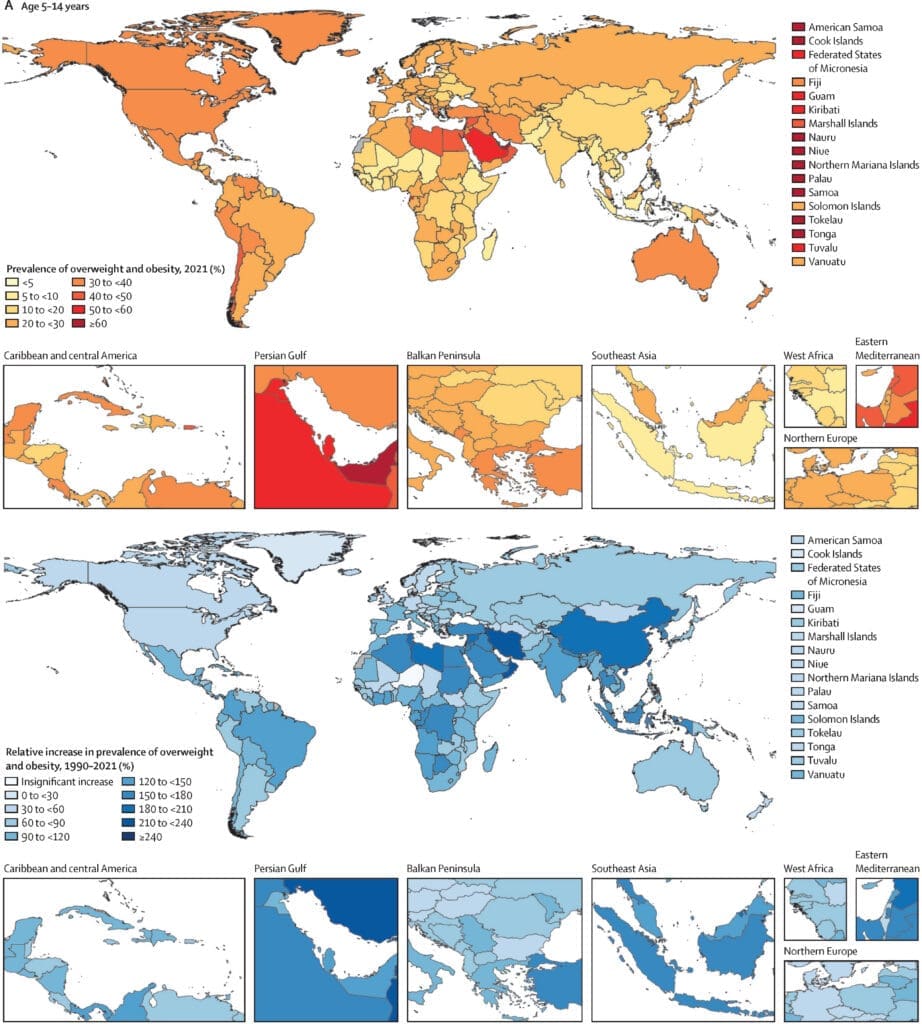Recent projections indicate that by 2050, about 60% of adults globally will be overweight or obese, underscoring a growing health crisis. Compared to three decades ago, people today are significantly more prone to obesity, posing a serious threat to global health and wellbeing.
Two studies published in The Lancet medical journal forecast that 60% of adults and 31% of children and young people worldwide will fall into this category, equating to 3.8 billion adults and 746 million youths. This is a steep increase from 1990, when there were 731 million overweight or obese adults and 198 million young people.

In high-income countries, such as the United States, the prevalence of obesity continues to rise. For instance, approximately 7% of men born in the 1960s were classified as obese by age 25, a figure that increased to 16% for those born in the 1990s and is projected to reach 25% for the 2015 cohort. The escalating obesity epidemic increases the risk of several health issues, including type 2 diabetes, high blood pressure, cardiovascular diseases, and certain cancers.
Emmanuela Gakidou, a study co-author and co-founder of the US-based Institute for Health Metrics and Evaluation (IHME), described the global rise in obesity as a “profound tragedy and a monumental societal failure.” The comprehensive analyses included nearly every country, revealing that while some regions experience larger shifts, obesity’s impact is becoming global.
Adult Obesity Rates and Health Complications
In 2021, over half of the world’s overweight or obese adults were from just eight countries: China, India, the United States, Brazil, Russia, Mexico, Indonesia, and Egypt. The report notes that future population growth in Asia and sub-Saharan Africa will significantly contribute to increasing obesity rates. Among high-income countries, the United States, Chile, and Argentina are forecasted to have the highest obesity rates by 2050. Greece is predicted to have the highest rates in Europe, with women at 48% and men at 41%.
The rise in obesity-related health complications is already affecting life expectancy and healthy aging in parts of Europe, the U.S., and Australia. By 2050, approximately one in four obese adults will be 65 or older, potentially straining healthcare systems, particularly in lower-income nations.
“While there is progress in some regions of Europe and North America, the opposite trend is observed in middle- and low-income countries,” stated Johanna Ralston, CEO of the World Obesity Federation. A separate analysis by her organization highlights that a mere 7% of global health systems are equipped to manage the surge in obesity-related health issues, which currently cause 1.6 million premature deaths annually.
Young People Facing Weight Issues
The Lancet authors categorized young demographics into children and young teenagers (ages 5 to 14), and older teens and young adults (ages 15 to 24). By 2050, young individuals are more likely to be overweight than obese, though obesity rates are anticipated to rise by 121%. This surge will vary by region, especially in North Africa, the Middle East, Latin America, and the Caribbean, with significant increases expected in populous countries like the U.S. and China.

In affluent countries, Chile is projected to have the highest obesity rates among children aged 5 to 14, while the U.S. will lead for those aged 15 to 24. Europe will see Greece with the highest rates for boys and young men, while San Marino and Greenland will top the list for girls aged 5 to 14 and those aged 15 to 24, respectively. Researchers believe that halting the transition to global child obesity is still possible if action is taken promptly.
“If we act now, we can prevent a complete shift to global obesity for children and adolescents,” said Dr. Jessica Kerr, a study author from Australia’s Murdoch Children’s Research Institute.
Efforts to Curb Obesity
The study utilized body mass index (BMI) to measure obesity, though a global expert panel recently suggested more precise metrics. The report did not factor in potential impacts from weight loss drugs like GLP-1 receptor agonists. While these drugs could revolutionize obesity treatment, Ralston emphasized that policy changes fostering healthier food systems and supportive communities are essential to addressing the epidemic’s root causes. The World Obesity Federation advocates for measures like food labeling, taxation, and improvements in health systems, but notes the lack of comprehensive societal approaches worldwide.

“We can’t solely rely on treatment or prevention; a multifaceted approach is necessary,” Ralston emphasized.
The Global Obesity Crisis: Decoding the Details
- As obesity rates climb, healthcare systems, particularly in low-income regions, may face overwhelming demand and costs.
- The increase in obesity-related diseases, such as diabetes and heart disease, could lead to higher mortality rates, affecting life expectancy.
- Rising obesity levels might influence public policies, prompting new regulations on food labeling, taxation, and public health initiatives.
- Communities may need to adapt infrastructures, like parks and recreational centers, to promote healthier lifestyles and combat obesity.
- The trend could spur innovation in weight management technologies and pharmaceuticals, influencing the healthcare industry significantly.
- The financial burden of managing obesity-related health issues could impact personal finances and national economies, emphasizing the need for preventive measures.












